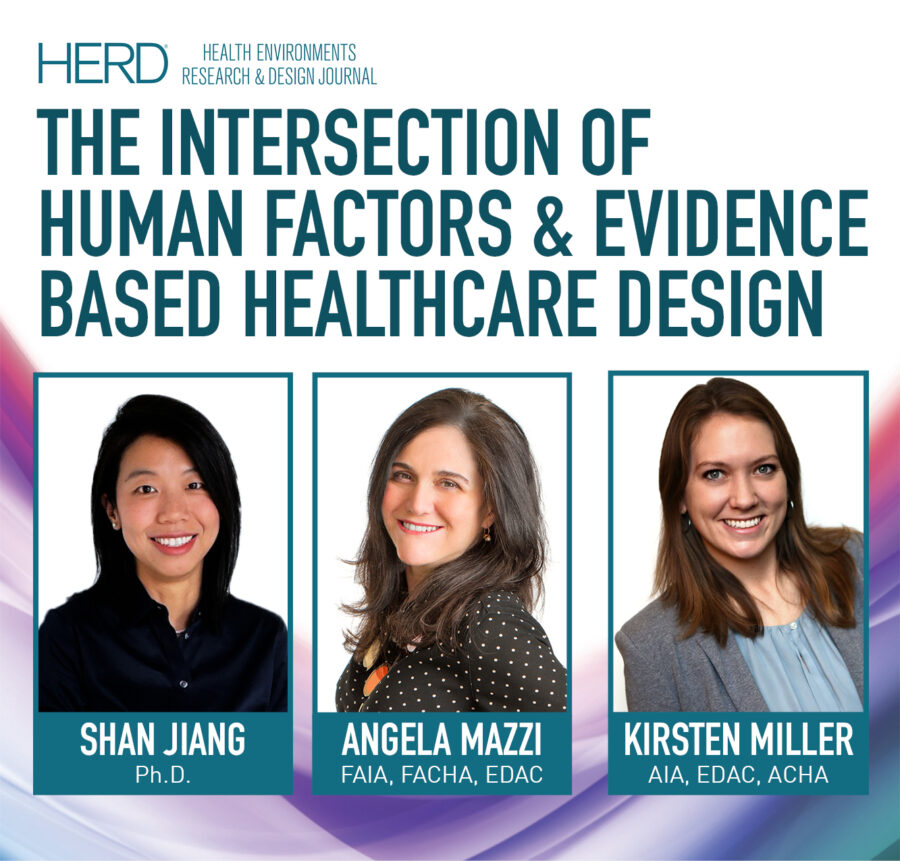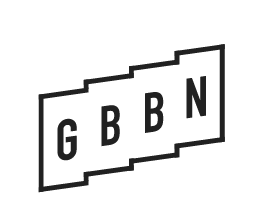Insights
Jul 21, 2025 _ insights
GBBN in HERD Journal: Human Factors and Evidence-Based Healthcare Design
Our latest white paper, “The Intersection of Human Factors and Evidence-Based Healthcare Design: A Conceptual Framework,” which focuses on the intersection of human factors and evidence-based healthcare design, has been published in HERD: Health Environments Research & Design Journal, a peer-reviewed journal focusing on the effects of health environments on patient, provider, and organizational outcomes. The report was done in partnership with researchers from academic and institutional researchers from Carilion Clinic, Cincinnati Children’s Hospital Medical Center, Corewell Health, Froedert Health, and Georgia Southern University.
The paper introduces Human Factors and Ergonomics (HFE) to healthcare architects and designers outlining the core concepts and comparing essential approaches. The HFE process is then compared with the benefits of evidence-based design (EBD) and demonstrates why integrating HFE expertise into the EBD of healthcare projects is advantageous.
Spaces shape human behaviors. The built environment influences the care provided by the healthcare system. HFE seeks to optimize human performance, health, safety, and habitability based on scientific knowledge about human capabilities and limitations. HFE considers the physical needs of humans for comfort, musculo-skeletal safety, and efficiency; cognitive, psychological, and social aspects; and the interactions between humans and technology. Understanding these interactions and considering them early in healthcare design can help enhance usability, functionality, and well-being for staff and patients.
The work of HFE engineers and healthcare architects may overlap when it comes to designing the physical environments of healthcare facilities. Both disciplines work to improve healthcare efficiency, promoting experience and safety, and reducing medical errors. Both disciplines adopt evidence-based and human-centered approaches in the design and evaluation of their work. However, HFE concerns and the expertise of HFE engineers are often not part of the design phase. In this paper we argue that integrating HFE expertise in early EBD considerations—through mock-ups or prototype evaluations—supports informed design decisions, enhances outcomes, and reduces cost.
This research suggests a benefit to an integrated framework that includes physical and AR mock-ups in evidence-based design of healthcare spaces. It points to a strong correlation between investing in mock-ups and a strong ROI. For every dollar invested in a detailed mock-up, almost $17.00 can be saved in the long term.
Read the full white paper in HERD Journal here.
Read our previously published work in HERD Journal here and here.
We recently presented on this topic at the Healthcare Facilities Symposium and Expo. See our presentation here.
Learn more about research at GBBN here.

Shan Jiang, Ph.D, is an associate principal and the director of research at GBBN. An established researcher, educator, and thought leader, she has published dozens of articles in peer-reviewed journals, presented at conferences, and recently published a full monograph with Routledge on therapeutic landscapes, healthcare design, and sustainable community development. At GBBN, Shan leads firm-wide research efforts, helping design teams in all markets conduct research while drawing on the best, established research to inform their work.

Angela Mazzi, FAIA, FACHA, EDAC is a principal and medical planner at GBBN. She is a past keynote panelist at the International Symposium on Human Factors and Ergonomics in Health CARE (HFES) and frequently presents insights around health and the built environment, including at the Healthcare Design Conference + Expo, The Center for Health Design, The American College of Healthcare Executives and the Swiss Center for Design & Health Symposium. Her research and insights around salutogenesis has been published in HERD Journal and other peer-reviewed publications. She is also a co-creator of GBBN’s Healthcare Symposium series, which brings together national, multidisciplinary experts around topics such as oncology care, staff burnout, and health equity.

Kirsten Miller, AIA, EDAC, ACHA is an associate and medical planner at GBBN. She combines evidence-based research and user group feedback to create uplifting healthcare spaces for patients and her healthcare research has been recognized by the Environmental Design Research Association (EDRA). She frequently presents insights at conferences including EDRA, Healthcare Facilities Symposium and Expo, and the American Society of Healthcare Engineers (ASHE) Region 6. A moderator of GBBN’s Healthcare Symposium: Caring for Providers, Tackling Burnout, Kirsten is passionate about “providing for providers” by giving physicians, practitioners, nurses, and specialists the kind of environments where they feel energized to deliver the best care possible.




